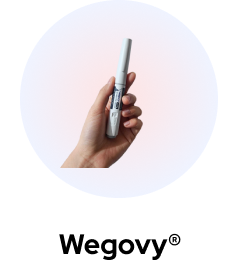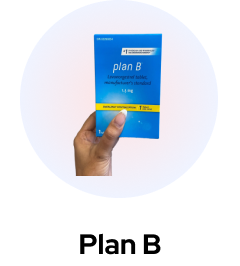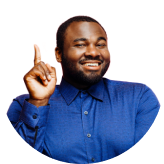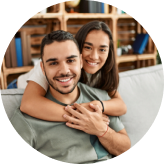Ozempic — the injectable prescription of semaglutide, marketed by Novo Nordisk — is an excellent tool in the treatment of type 2 diabetes and for assisting with weight management.
But if you’ve recently been prescribed it, then you may be wondering how exactly you use your Ozempic Pen, and whether or not it’s easy to self-administer your injections.
Well, fear not! Because this is your comprehensive guide to using your Ozempic Pen!
In this article we’ll cover:
- What the Ozempic Pen is
- How your Ozempic Pen should be used and any limitations
- Safety information you should be aware of
- Understanding what side effects you may experience
- A complete guide to how to use your Ozempic Pen
- The benefits of semaglutide as an injection vs. oral tablet
- How to use Ozempic for weight management
- Ozempic anecdotal experiences
- Frequently asked questions.
If you’re ready to learn everything there is to know about your Ozempic Pen, read on!
What Is the Ozempic Pen?
The Ozempic Pen is the administration device for the drug Ozempic, marketed by Novo Nordisk and primarily used by those with a type 2 diabetes diagnosis. Its active ingredient is semaglutide. Semaglutide is also marketed under brand names Wegovy and Rybelsus.
Trulicity, Glimepiride, and Metformin are other brand names you may be aware of used in the treatment of type 2 diabetes. However Trulicity contains dulaglutide, Glimepiride is a sulfonylureas, and Metformin is a biguanide.
Semaglutide is known as a glucagon-like peptide-1 (GLP-1) receptor agonist, which mimics the action of natural GLP-1 hormones in the body. Receptor agonists work to control your insulin and blood sugar levels, as well as slow digestion.
While Ozempic is intended for those with type 2 diabetes, its off-label ability to affect the hunger centers of the brain and slow gastric emptying has made it an effective tool for weight management.
Currently, Health Canada’s approval of the drug only extends to those with type 2 diabetes or with a body mass index (BMI) of 27 or over.
Ozempic Pens are similar to EpiPens, containing a dosage intended to be self-administered over the course of four weeks. Injections should be administered subcutaneously (ie, under the skin into the fatty layer), once per week.
In addition to its benefits for type 2 diabetes patients (note that it is approved for use in adults only and not children) and those seeking weight management assistance, Ozempic may also reduce the risk of major cardiovascular events (ie, heart attack, stroke, heart disease, or death), as well as reduce the risk of developing type 2 diabetes in high-risk individuals.
As it is a prescription drug, if you are considering Ozempic usage, you will need to discuss with your medical team for prescription approval. If you are approved, they will be able to put a treatment plan in place for you, as well as monitor your progress on the drug, and provide you with any extra care as needed.
Once you have been prescribed Ozempic, you may fill your prescription at any pharmacy location across Canada, as long as they have supplies.
Indications and Limitations of Ozempic Use
Ozempic is intended to be used alongside a healthy diet and exercise in individuals with type 2 diabetes, or those with a BMI of 27 or over.
You may also find combining this with therapy support helpful, particularly if you have an underlying negative relationship with food, depression, or anxiety. It’s important to remember that your mental health needs as much care as your physical health, especially when embarking on big lifestyle changes.
You should note the following disclaimers:
- The Ozempic rights of treatment are not approved for those with type 1 diabetes, children, or those who do not have obesity (ie, a BMI under 27)
- Bear in mind that the cost of Ozempic will only be covered by your health insurance if you have been prescribed it for treatment of type 2 diabetes. This may limit your access to the drug.
Important Safety Information for Ozempic
There are a few warnings you should bear in mind with Ozempic.
Ozempic has a number of negative drug interactions associated with it, which may cause vomiting or diarrhea and thus inhibit your absorption of Ozempic. Be sure to fully disclose to your medical team any prescription medications you may be currently taking before starting the drug. This includes supplements and vitamins.
If you are going through pregnancy, breastfeeding your baby, or planning to conceive, you should discuss this with your medical team, as your treatment plan may need to be delayed, discontinued, or otherwise adjusted.
You should never share your Ozempic Pen with another person, even if you’ve changed the needle. This may lead to infection.
Your Ozempic Pen should be stored in the refrigerator when unopened, between 36ºF–46ºF. After it’s been opened, you may keep it in storage at room temperature (59ºF–86ºF) away from direct light or heat for 56 days, after which it should be disposed of in a sharps container, even if it still has Ozempic in it. Never freeze or use an Ozempic Pen that has been frozen.
All used Ozempic Pen needles should be disposed of in a sharps disposal container immediately after use.
Ozempic is a prescription medication — be sure to keep it and any other prescription drugs out of the reach of children or animals, and follow all safety and usage directions and instructions.
Do Not Use Ozempic If:
While Ozempic is considered to be a safe medicine, there are some considerations you should bear in mind. Do not use Ozempic if you have:
- A personal or family history of pancreatitis
- Type 1 diabetes mellitus
- A personal or family history of medullary thyroid carcinoma (MTC)
- A personal or family history of Multiple Endocrine Neoplasia syndrome type 2 (MEN 2)
- A personal or family history of gallbladder disease
- Have allergies to semaglutide or any of the ingredients in Ozempic.
Understanding the Side Effects of the Ozempic Pen
While Ozempic is a very effective drug, there are a number of reported common and rare side effects which you should be aware of before starting the medication.
If you’re concerned about any of these, discuss the risks with your medical team, who will be able to give you more details.
What are the Possible Side Effects of Ozempic?
Rare but serious common side effects of Ozempic may include:
- Risk of medullary thyroid carcinoma (MTC; thyroid cancer)
Animal studies and trials, specifically on mice, who were given semaglutide developed thyroid tumors. It is unknown if the same complications would cause thyroid cancer in humans. However, if you develop hoarseness of the throat, sore spots, or lumps in your neck, discontinue your use of Ozempic immediately and contact your medical team.
- Pancreatitis (inflammation of the pancreas)
Symptoms include severe pain in your abdomen (and up to your back) and vomiting.
- Changes in vision or issues with eyes (diabetic retinopathy)
- Hypoglycemia
Symptoms of hypoglycemia include dizziness, blurred vision, anxiety, irritability, sweating, slurred speech, hunger, confusion or drowsiness, shakiness, weakness, headache, fast heartbeat, and jittery feelings.
- Kidney problems
Dehydration is a risk for people with kidney problems, especially if you have diarrhea, nausea, or vomiting.
- Gallbladder problems
Gallbladder issues may present as fever, jaundice (yellowing of the eyes and skin), pain in the upper abdomen, gallstones, or clay-colored stools.
- Allergic reactions
If you suffer from an allergic reaction after administering your Ozempic dose, you may experience swelling of the face, lips, tongue, throat, or hands, shortness of breath, or develop redness, itching, a rash, or hives around the injection site.
If during the course of your Ozempic treatment you develop any signs or symptoms of the above serious side effects, discontinue your use immediately and contact your medical team, or contact your local emergency services.
What are the Most Common Side Effects of Ozempic?
Commonly reported side effects may include:
- Nausea and headache
- Vomiting
- Diarrhea
- Stomach pain
- Constipation.
In most cases, most of these dissipate with use. Talk to your medical team or Nurse Practitioner if you have any concerns about your side effects.
How to Manage the Most Common Side Effects of Ozempic
If you are experiencing the above common side effects when using Ozempic, here is some advice and tips which may help:
- Eat bland, low-fat foods – This includes toast, crackers, and rice.
- Eat high-water content foods – This includes gelatin and soup.
- Avoid high-fat or high-sugar foods – Fried, greasy, or sweet foods may all make you feel more nauseous.
- Avoid lying down after eating
- Eat smaller meals, more slowly
- Drink ice-cold or clear drinks
- Head outside and get some fresh air.
Mastering the Usage of the Ozempic Pen
Using your Ozempic Pen is designed to be simple and straightforward so that any Ozempic patient may self-administer their dosage.
If you’re unsure or have any trouble self-administering, be sure to talk to your medical team, Nurse Practitioner, or pharmacist, as they may be able to give you further instruction.
Novo Nordisk, the manufacturer of Ozempic Pens, also has a handy video on their website demonstrating how to use pens containing Ozempic. You may also check this guide for references here.
How to Use an Ozempic Pen: Dosage
Your medical team will come up with a treatment plan for administration of the drug, which includes your dosage, as this may vary from person to person.
However, in general, you’ll begin on 0.25 mg, increasing to 0.5 mg in week 4. This will then be your maintenance dosage, which you will remain on for the duration of treatment.
If you require further management of your blood sugar levels, your dose may be increased to 1 mg or 2 mg. This is the maximum dosing available.
Administering Ozempic
Administering your Ozempic Pen only takes a few easy steps:
- Wash your hands thoroughly with hands and soap before beginning
- Check the Ozempic label on your pen, that the liquid in your pen is clear and colorless (ie, free from discoloration or particles), and that it is not expired
- Remove the paper tab on a fresh needle, push and turn it onto the pen until tight, and remove both needle caps
- Turn the dose pointer until the dose counter shows the flow check symbol, then press and hold the dose button until the dose counter shows zero and a drop appears in the needle tip
- Set your dose selector on the dose counter (0.25 mg, 0.5 mg, 1 mg, or 2 mg)
- Use an alcohol swab or cotton ball soaked in alcohol to disinfect your injection area, then insert the needle into the skin, pressing and holding down the dose button. Watch for the dose counter to reach zero indicating it is empty, and slowly count to six, before removing the needle
- Remove the used needle and dispose of it in a sharps container, then replace the pen cap.
Be sure to read the package insert that comes with your Ozempic Pen.
Where Is the Optimal Injection Site for Ozempic?
Your Ozempic should be administered subcutaneously (ie, into the fatty layer beneath the skin), avoiding muscle or blood veins. Optimal injection sites include:
- The front of the thighs
- The front of the abdomen
- Your upper arms.
You should rotate the inject site each time you inject your Ozempic Pen to prevent soreness and bruising.
What Happens if I Miss my Dose of Ozempic?
Ozempic is best taken at the same times weekly — both day of the week and time of day.
However, if you miss your dose of Ozempic, as long as you’re within five days of your missed dose, you may still take it. If you have already passed five days, skip your dose, and inform your medical team, as you may need to adjust your Ozempic timetable.
Doubling your dose may lead to a risk of hypoglycemia. If you overdose on your Ozempic, contact your medical team immediately, or go to your local ER.
Should I Take My Ozempic with Food?
Ozempic may be taken with or without food. However, it may help with side effects if you have a small meal before taking the drug.
Is It Better to Take Ozempic in the Morning or at Night?
There is no significant difference in taking Ozempic in the morning or at night. If you suffer from nausea while using Ozempic, taking it at night may make the drug more tolerable.
As Ozempic is designed to be administered once weekly, so long as you stick to a consistent routine, it will have the most efficacy. If you change your weekly dosage day, be sure to leave at least 2 calendar days (48 hours) between doses.
How Many Doses Are Contained in One Ozempic Pen?
Each Ozempic Pen contains four doses of the drug (ie, one month’s supply).
Exploring the Benefits of Injections vs. Oral tablets
In Canada, only semaglutide injections are approved for use, as they have been found to have a much greater efficacy than oral tablets.
In this 2021 study on the efficacy of both subcutaneous and oral formulations of semaglutide, the researchers found that injections of semaglutide were much more effective than oral tablets in reducing overall body weight.
However, they noted that both forms had good responses, especially when compared to other drugs for the treatment of type 2 diabetes, and ultimately it should be prescribed according to the patients’ needs.
Weight Management with Ozempic
While not intended for the use of weight management, Ozempic has a number of positive side effects which may assist with your weight management goals.
Remember that Ozempic is not a quick-fix solution for weight management and should not be used as a substitute for lifestyle changes, but used in tandem with them.
The Best Place to Inject Ozempic for Weight Loss
The best site for injection of Ozempic is the same, no matter your reasons for administering the drug. That is:
- The front of the thighs
- The abdomen
- The upper arms.
How Much Weight Can You Lose in One Month on Ozempic?
There is no set amount of body weight that you may lose in one month on Ozempic, and all clinical trials have generally lasted for several months.
Anecdotal evidence suggests that you may see positive weight management results in a few weeks, though it’s more likely that it will take several months before you notice major changes.
As a general rule of thumb, you should aim for a weight loss of two pounds per week, as this is considered both safe and sustainable.
Do You Regain Weight After Stopping Ozempic?
Once you have stopped Ozempic, the effect the drug has on your hunger centers will also stop. This often leads to an increase in hunger and appetite, which may lead to weight regain.
In fact, this study from 2022 found that the 327 participants regained 2/3rds of their weight loss once they had stopped subcutaneous semaglutide. This reaffirmed the difficulty those who suffer with obesity face, and the need for ongoing support and treatment.
If your course of Ozempic has concluded, be sure to maintain any healthy lifestyle changes you’ve begun as part of your treatment, and continue communicating with your medical team for support.
How to Use an Ozempic Pen for Weight Loss
Using an Ozempic Pen for weight management is the same as using it for the treatment of type 2 diabetes:
- Wash your hands thoroughly with hands and soap before beginning
- Check the Ozempic label on your pen, that the liquid in your pen is clear and colorless (ie, free from discoloration or particles), and that it is not expired
- Remove the paper tab on a fresh needle, push and turn it onto the pen until tight, and remove both needle caps
- Turn the dose pointer until the dose counter shows the flow check symbol, then press and hold the dose button until the dose counter shows zero and a drop appears in the needle tip
- Set your dose selector on the dose counter (0.25 mg, 0.5 mg, 1 mg, or 2 mg)
- Use an alcohol swab or cotton ball soaked in alcohol to disinfect your injection area, then insert the needle into the skin, pressing and holding down the dose button. Watch for the dose counter to reach zero indicating it is empty, and slowly count to six, before removing the needle
- Remove the used needle and dispose of it in a sharps container, then replace the pen cap.
Your medical team will put a treatment plan in place for you, including the dosage required.
Personal Experiences: What’s It Like to Take Ozempic?
While there are some people who do not have positive experiences with Ozempic, there are plenty of others who do, especially on the Ozempic Subreddit.
This Redditor noted that upon starting Ozempic their appetite dropped, they felt fuller and more satiated, and ate meals a third smaller than their usual amount.
While they noted that upon occasion they felt a little nauseous, it was connected to overeating. After a single week, they were able to lose 8.4 lbs.
Another Redditor celebrated their move from the Class 2 Obese category to Overweight with the help of Ozempic. They also had a number of other disorders, including PCOS, hypothyroid, insulin and leptin resistance.
They lost 42 lbs in 5 months, and experienced a reduction in appetite, as well as an increased feeling of fullness from smaller meals. They did note that their appetite would increase towards the end of the week as they reached their next injection date.
Negative side effects included gassiness, diarrhea and constipation, and nausea, but they noted that they were minor and they felt that the benefits outweigh the risks.
Most of those who were taking Ozempic for its weight management benefits had tried traditional methods and weight management products in the past, but found that these did not have as effective results as Ozempic.
However, they did note that Ozempic was not a quick-fix drug, nor should it be treated as such, and the chances of success were higher alongside healthy lifestyle changes.
Key Takeaways
Ozempic, the brand name for semaglutide as marketed by Novo Nordisk, is an extremely effective medication for the treatment of type 2 diabetes and as a weight management tool for those with a BMI over 27.
Using the Ozempic Pen, the dispensing device from Ozempic, is intended to be easy to use and convenient, so that patients may self-administer the drug subcutaneously, once weekly.
You should be aware that there are a number of contraindications and side effects associated with Ozempic. Some side effects are less severe and commonly reported, while others are more severe (though rare).
If you’re concerned about any of the side effects of Ozempic, need further instruction on self-administering your dosage, or have any other questions, contact your medical team or Nurse Practitioner.
Frequently Asked Questions (FAQs)
What do I need to know before considering using Ozempic?
- The Ozempic rights of treatment are not approved for those with type 1 diabetes, children, or those who do not have obesity (ie, a BMI under 27)
- Bear in mind that the cost of Ozempic will only be covered by your health insurance if you have been prescribed it for treatment of type 2 diabetes. This may limit your access to the drug.
Can I watch a video on how to give an Ozempic injection?
There are multiple videos available with instructions for how to administer your Ozempic introduction. This video on YouTube is helpful, as is this one on the Novo Nordisk website.
What to do if an Ozempic Pen is damaged or not working?
If your Ozempic Pen is damaged or not working, discard it and use a new pen, and contact your medical team. You may also contact Novo Nordisk to report a product issue.
Can Ozempic be used in combination with other diabetes medications?
Due to the fact that Ozempic has a number of contraindications with other medicines, you may only use it in combination with other diabetes medications in consultation with your medical team. Be sure to discuss with them before starting Ozempic.
Do You Regain Weight After Stopping Ozempic?
Once you have stopped Ozempic, the effect the drug has on your hunger centers will also stop. This often leads to an increase in hunger and appetite, which may lead to weight regain.
In fact, this study from 2022 found that the 327 participants regained 2/3rds of their weight loss once they had stopped subcutaneous semaglutide. This reaffirmed the difficulty those who suffer with obesity face, and the need for ongoing support and treatment.
If your course of Ozempic has concluded, be sure to maintain any healthy lifestyle changes you’ve begun as part of your treatment, and continue communicating with your medical team for support.
Sources
- https://www.ozempic.com/
- https://www.novomedlink.com
- https://www.ozempic.com/
- https://www.ncbi.nlm.nih.gov/
- https://pubmed.ncbi.nlm.nih.gov/
- https://www.novomedlink.com/
- https://www.reddit.com/
- https://www.reddit.com/
- https://www.reddit.com/












 (US)
(US)